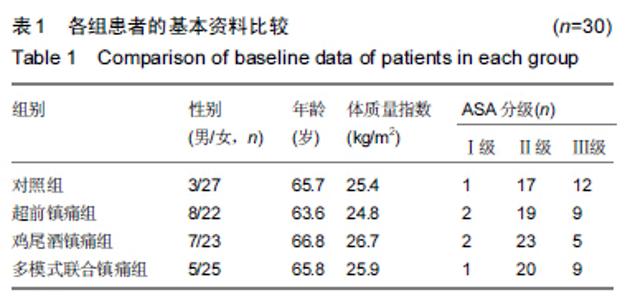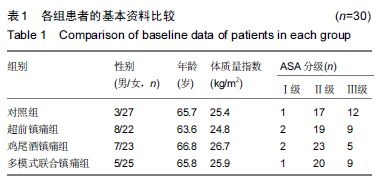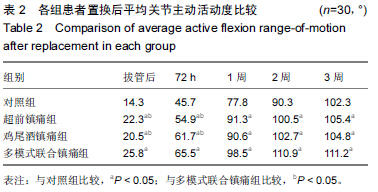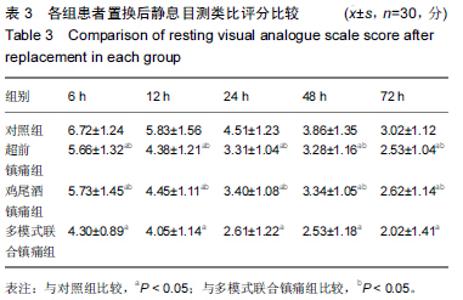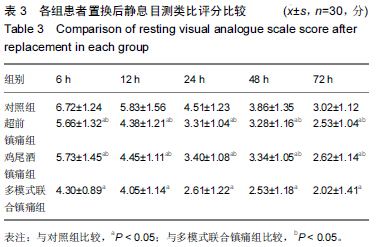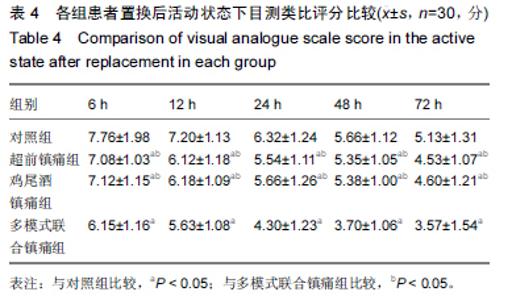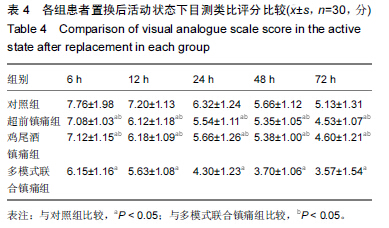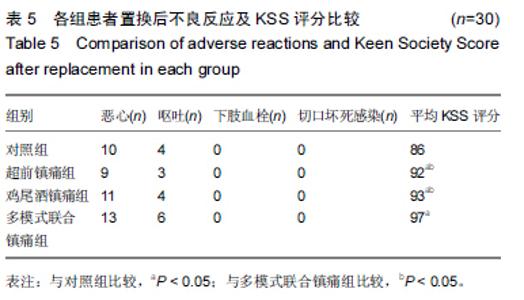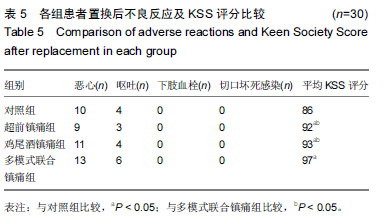[1] Puolakka PA, Rorarius MG, Roviola M, et al. Persistent pain following knee arthroplasty. Eur J Anaesthesiol. 2010;27(5): 455-260.
[2] Beswick AD, Wylde V, Gooberman-Hill R, et al. What proportion of patients report long-term pain after total hip or knee replacement for osteoarthritis? A systematic review of prospective studies in unselected patients. Br Med J Open. 2012. doi:10.1136/bmjopen-2011-000435.
[3] Puolakka PA, Rorarius MG, Roviola M, et al. Persistent pain following knee arthroplasty. Eur J Anaesthesiol. 2010;27: 455-460.
[4] Ilfeld BM, Le LT, Meyer RS, et al. Ambulatory continuous femoral nerve blocks decrease time to discharge readiness after tricompartment total knee arthroplasty: a randomized, triplemasked, placebo-controlled study. Anesthesiol. 2008; 108(4):703-713.
[5] Rasanen P. Effectiveness of hip or knee replacement surgery in terms of quality-adjusted life years and costs. Acta Orthop, 2007;78(1):108-115.
[6] Capdevila X, Barthelet Y, Biboulet P, et al. Effects of perioperative analgesic technique on the surgical outcome and duration of rehabilitation after major knee surgery. Anesthesiol.1999;91:8-15.
[7] Perkins FM, Kehlet H. Chronic pain as an outcome of surgery. A review of predictive factors. Anesthesiol. 2000;93: 1123-1133.
[8] McCartney CJ, Choi S. Does anaesthetic technique really matter for total knee arthroplasty? Br J Anaesth. 2013;111: 331-333.
[9] Rosenberg PH. Future of regional anaesthesia. Acta Anaesthesiol Scand. 2005;49(7):913-918.
[10] Paul JE, Arya A, Hurlburt L, et al. Femoral nerve block improves analgesia outcomes after total knee arthroplasty: a meta-analysis of randomized controlled trials. Anesthesiology. 2010;113(5):1144-1162.
[11] Fowler SJ. Epidural analgesia compared with peripheral nerve blockade after 41 major knee surgery: a systematic review and meta-analysis of randomized trials. Br J Anaesth. 2008;100(2):154-164.
[12] 杜冬萍,马柯,徐建国.非甾体抗炎药[A].徐建国主编.疼痛药物治疗学[M].北京:人民卫生出版社,2007:132-133.
[13] American College of Rheumatology Ad Hoc Grop on Use of Selective and Nonselective Nonsteroidal Antiinflammatory Drugs. Recommendations for use of selective and nonselective nonsteroidal anti-inflammatory drugs:an American College of Rheumatology white paper. Arthritis Rheum. 2008;59(8):1058-1073.
[14] Essving P, Axelsson K, Otterborg L, et al. Minimally invasive surgery did not improve outcome compared to conventional surgery following unicompartmental knee arthroplasty using local infiltration analgesia A randomized controlled trial with 40 patients. Acta Orthop.2012;83:634-641.
[15] McAllister CM, Stepanian JD. The impact of minimally invasive surgical techniques on early range of motion after primary total knee arthroplasty. J Arthroplast. 2008;23:10-18.
[16] Leopold SS. Minimally invasive total knee arthroplasty for osteoarthritis. N Engl J Med. 2009;360:1749-1758.
[17] Forsythe ME, Dunbar MJ, Hennigar AW, et al. Prospective relation between catastrophizing and residual pain following knee arthroplasty: a two-year follow-up. Pain Res Manag. 2008;13(4):335-341.
[18] Apdevila X,Barthelet Y,Biboulet P,et al. Effects of perioperative analgesictechnique on the surgical outcomeand durationofrehabilitationafter major knee surgery. Anesthesiology. 2009;91:8-15.
[19] 张吴华,张洪,周一新,等.全膝关节置换术围术期多模式镇痛方案的临床研究[J].中华骨科杂志,2008,28(8):647-650.
[20] Scott NB. Wound infiltration for surgery. Anaesth. 2010;65: 67-75.
[21] Kehlet H, Andersen LO. Local infiltration analgesia in joint replacement: the evidence and recommendations for clinical practice. Acta Anaesthesiol Scand. 2011;55:778-784.
[22] McCartney CJ, Choi S. Does anaesthetic technique really matter for total knee arthroplasty? Br J Anaesth. 2013;111: 331-333.
[23] Chan EY, Blyth FM, Nairn L, et al. Acute postoperative pain following hospital discharge after total knee arthroplasty. Osteoarthr Cartil. 2013;21:1257-1263.
[24] Sale JE, Gignac M, Hawker G. How ‘‘bad’’ does the pain have to be? A qualitative study examining adherence to pain medication in older adults with osteoarthritis. Arthr Rheum. 2006;55:272-278.
